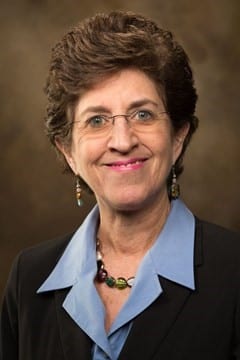Are you interested in Service Learning? Are you unsure how you might incorporate it into your classroom? There are a variety of technologies that can help you to easily incorporate Service Learning activities in your class.
 Kristina (Tina) Howlett, Assistant Professor of TESOL in the Department of Curriculum and Instruction, met with faculty to share technology tips that she uses with her service learning students.
Kristina (Tina) Howlett, Assistant Professor of TESOL in the Department of Curriculum and Instruction, met with faculty to share technology tips that she uses with her service learning students.
Dr, Howlett asked us all to consider integrating one mobile device, iPad, website, or Blackboard idea into your service learning course. It’s important to think about why we would want to integrate technology into our courses rather than using technology just to use it! One reason would be because we live in a technological world and our students may be missing a basic skill that we can introduce them to that could help them throughout their lives. Other faculty use technology to record lectures so that students can use the videos to review or have students speak in the classroom to become accustomed to using microphones.
Howlett focuses on service learning with her students and has them follow the SAMR model. These students complete long-term projects and learn how to practice using technology in their future educational practice.
The SAMR model stands for Substitution, Augmentation, Modification, and Redefinition. This model can help you start incorporating technology and move to higher levels of integration.
- Substitution: Technology acts as a direct substitute, with no functional change
- Augmentation: Technology acts as a direct substitute, with functional improvement
- Modification: Technology allows for significant task redesign
- Redefinition: Technology Allows for the creation of new tasks, previously inconceivable
Some of the innovations that Howlett uses in the classroom include audio recordings. Her students can record interviews with their tutees to get to know them better, record their tutees reading to improve fluency, and complete audio journals after each session to self-reflect.
Another device Tina uses is the iPad because many schools have these devices and they are cheaper for families to purchase, rather than a desktop computer, if students need to do work at home. iPads not only have many apps with built-in features to strengthen language skills, but they also allow students to take charge of their own learning by creating drawings, audio recordings, taking pictures, or making short videos. Attendees got to play with EPIC, Duolingo, BrainPop ELL, and LittleBird Tales but there are many free apps available that may be useful for your course.
When Howlett’s students start using a new piece of technology, she encourages them to explore it and learn on their own then offers guidance when necessary. This may even mean that a student discovers a new tool to share with the rest of the class!
Each of these tools can be used at different levels to move up and down the SAMR model. Tina showed us how you could move up this model with a laptop:
- Practice Typing = Substitution
- Google Images = Augmentation
- YouTube Videos = Modification
- Google Earth = Redefinition
If you would like information about how to add technology to your Blackboard courses, reach out to us at tips@uark.edu
This content was developed from a presentation by Kristina (Tina) Howlett which was sponsored by the TIPS Team and The Wally Cordes Teaching and Faculty Support Center (TFSC) at the University of Arkansas.